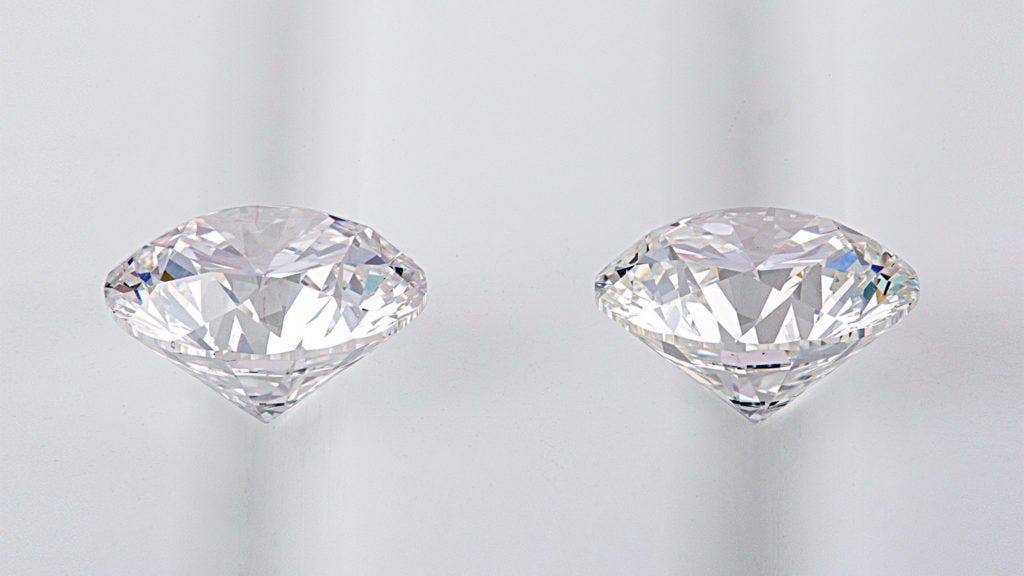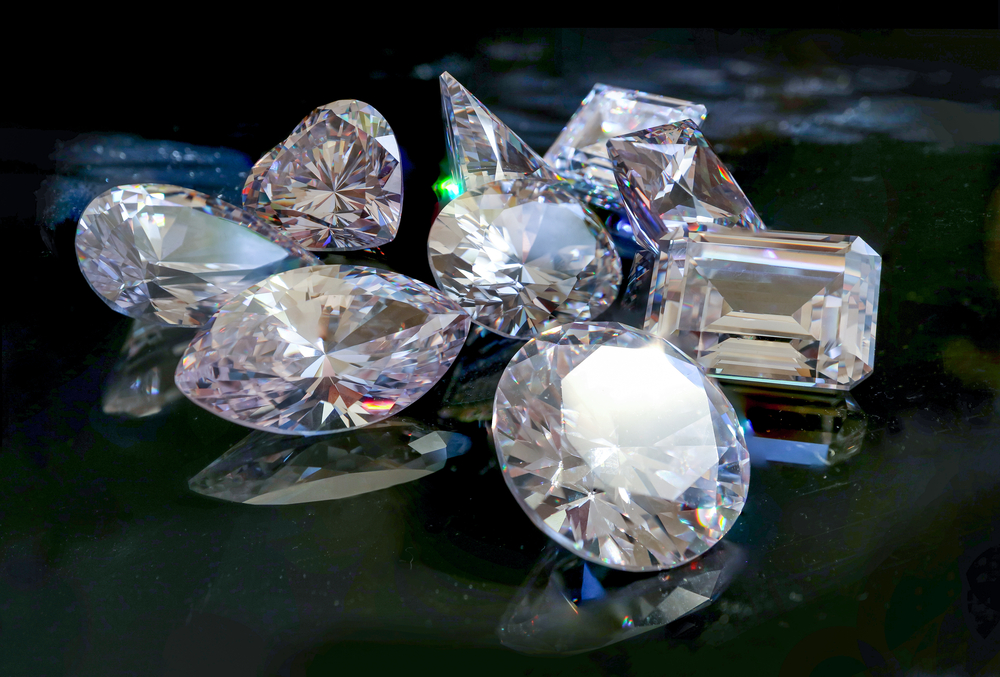
When it comes to choosing the perfect gem for your engagement ring or jewelry collection, it’s important to understand the key distinctions between lab made diamonds vs real mined diamonds. As more consumers lean toward ethical and sustainable luxury, lab diamonds have surged in popularity, offering a compelling alternative to their natural counterparts in terms of cost, beauty, and origin.
But how exactly do lab grown diamonds stack up against real, earth-mined diamonds? Are there noticeable differences in appearance or durability? What about value and certification? Let’s dive deep into the debate of lab made diamonds vs real to uncover which option is right for you.
What Are Lab Made Diamonds?
Lab diamonds, also called lab grown diamonds, are chemically and physically identical to natural diamonds. They are grown in highly controlled laboratory environments using advanced technological processes such as:
-
High Pressure High Temperature (HPHT)
-
Chemical Vapor Deposition (CVD)
These methods replicate the natural conditions under which diamonds form in the earth’s crust, resulting in gems that are carbon-based and crystalline—just like mined diamonds.
Unlike diamond simulants (such as cubic zirconia or moissanite), lab diamonds are 100% real diamonds, graded and certified by the same institutions, such as the GIA or IGI.
What Are Natural (Real) Diamonds?
Natural or real diamonds are formed deep within the Earth over billions of years under intense heat and pressure. They are extracted through traditional mining processes and then cut, polished, and sold.
While natural diamonds carry a certain romantic appeal due to their age and rarity, they also come with environmental and ethical concerns related to mining practices, carbon emissions, and even human rights violations in certain regions.
One of the most common questions people ask when comparing lab made diamonds vs real diamonds is: “Can you see a difference?”
The answer is no—at least not with the naked eye. Both options boast the same fire, brilliance, and clarity. Even trained gemologists often require special equipment to detect the growth patterns that distinguish lab diamonds from mined ones.
In essence, lab diamonds are visually indistinguishable from real diamonds.
Price Advantage: Lab Diamonds Win Big
If cost is a factor—and for most shoppers, it is—lab made diamonds offer a major advantage. On average, you can expect to pay 30–50% less for a lab diamond of the same size and quality as a mined diamond.
This price difference means you can often afford:
-
A larger carat stone
-
A better cut or clarity
-
A more luxurious setting
Without compromising on the beauty or quality of your jewelry.
Durability: Equal Strength and Longevity
Diamonds are famous for being the hardest substance on Earth, scoring a perfect 10 on the Mohs scale of hardness. That goes for both lab grown and natural diamonds.
This makes them incredibly resistant to scratching, chipping, or wear—ideal for daily wear items like engagement rings.
So in terms of durability, there is no difference between lab made diamonds vs real diamonds.
Ethical and Environmental Impact
One of the biggest reasons behind the growing popularity of lab diamonds is their ethical and sustainable appeal.
Lab Diamonds:
-
Use fewer natural resources
-
Have lower carbon emissions
-
Are guaranteed conflict-free
-
Avoid harmful labor practices
Real Diamonds:
-
Can be ethically sourced but often involve complex supply chains
-
Some are still linked to unethical labor and environmental destruction
-
Carry the risk of being associated with conflict zones or “blood diamonds”
If social responsibility and eco-consciousness are important to you, lab made diamonds are a compelling choice.
Certification and Value Retention
Both lab diamonds and real diamonds can be certified by reputable organizations like GIA (Gemological Institute of America) or IGI (International Gemological Institute). Certification ensures that the diamond has been graded for the 4Cs—cut, color, clarity, and carat weight.
However, one area where real diamonds traditionally outperform lab diamonds is resale value. Natural diamonds may retain more value over time due to their rarity and long-standing place in the market. But this is shifting as lab grown diamonds gain mainstream acceptance and demand continues to rise.
Important Note: Jewelry, in general, should not be seen as a short-term investment. Whether lab or natural, resale is often at a loss unless the piece is rare or antique.
The Emotional and Cultural Factor
Some buyers still prefer natural diamonds due to the romanticism attached to their ancient origins and the tradition of gifting a “real” diamond.
That said, younger generations—particularly Millennials and Gen Z—are actively redefining luxury. They are more concerned with transparency, sustainability, and value for money, leading to a surge in lab diamond popularity.
Which Should You Choose?
Choose Lab Diamonds If:
-
You want a real diamond for less money
-
You value ethical sourcing and sustainability
-
You prefer a modern, conscious approach to luxury
-
You’re not concerned about long-term resale value
Choose Real Diamonds If:
-
You value rarity, tradition, or resale value
-
You prefer gems formed by nature over machines
-
You’re emotionally attached to the concept of “earth-born” stones
Final Verdict: It’s About Your Values
Ultimately, the debate of lab made diamonds vs real comes down to personal values and priorities. Both options are beautiful, durable, and luxurious—but lab diamonds allow you to make a statement that reflects a modern mindset, one that blends beauty with responsibility.
In a world that’s becoming more aware of environmental issues and social impact, lab diamonds are setting a new standard for conscious consumerism—without compromising on elegance or authenticity.





